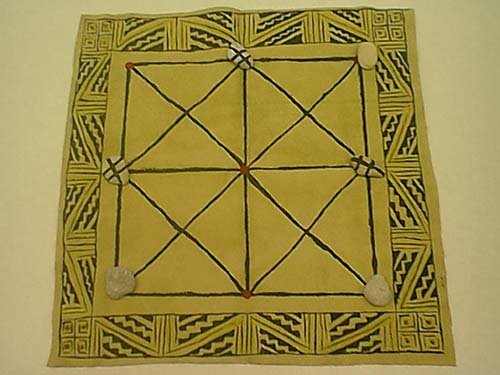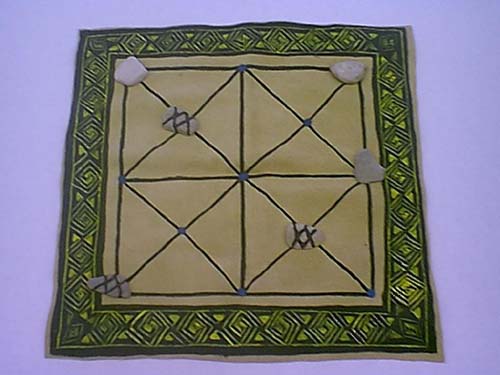| Origin: | Pueblo Nation in New Mexico |
| History: | The word "pueblo" refers to an Indian culture that is unique to the Southwest, and not to a particular tribe. When the Spanish settled in this area in the 16th century they named the people of this land "pueblos," after the villages they had left behind. Many people believe that this game was adapted from a similar game played in Spain. The word "Picaria" sounds like a Spanish word that translates to "little stone". |
| Original Materials: | Etched stones - board; pebbles or corn kernels - place markers |
| Adapted Materials: | Leather or construction paper - board: stones or coins - place markers. |
| Players: | 2 players |
| Setup: | Create the pattern as shown, and mark the nine points on which it is played. Each player gets three place markers (two different colors). |
| To Play: | The two players take turns placing one counter at a time on an empty space on the board. When they have all been placed, the players take turns moving one counter at a time along any line to the next empty point. Jumping over a counter is not allowed. |
| To Score: | Each player tries to create a row of three-this can be made in any direction. The winner is the first player to get three in a row. |
| Variations: | Create more intersections for the markers to move on. |
| Math Content: | Problem solving, critical thinking. |
| Source: | Zaslavsky C. (1998). Math Games & Activities from around the World, Chicago Il: Chicago Review Press, |
 | |
 |
 Return to Aboriginal Games | Return to Math Central |